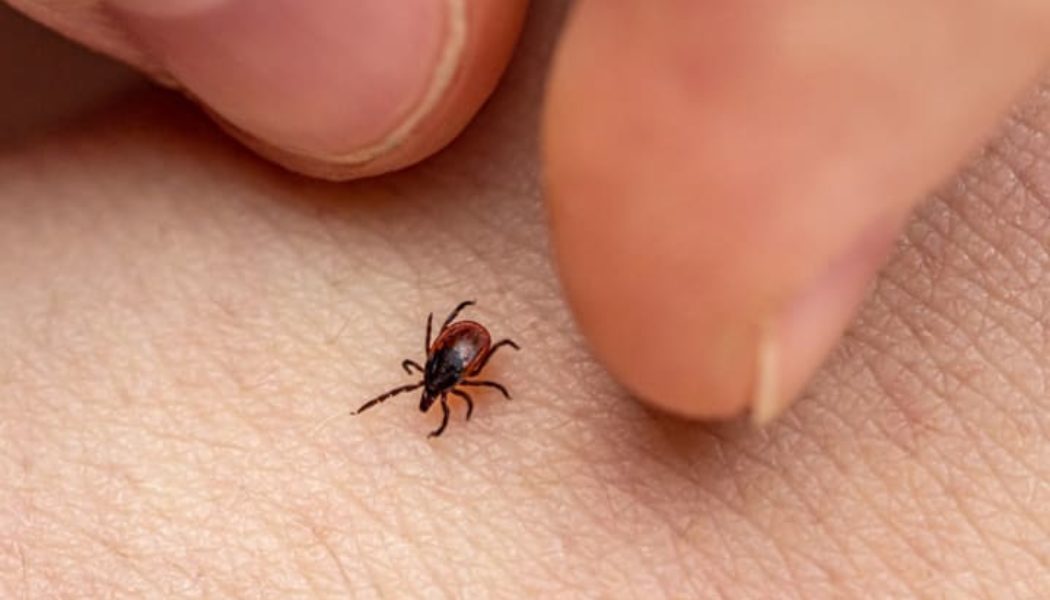Warmer weather is here, which means tick season is in full swing. Like other creepy crawlies that feed on our blood and spread disease, ticks can cause a lot of anxiety, which has led to plenty of misinformation regarding how dangerous they are, how they find prey, and the best ways to get rid of them. Before venturing outdoors, read up on the most common myths about ticks.
After spotting a tick latched to their body, some people make the problem worse by grabbing a lighter. According to the myth, burning a tick off your skin is the most efficient way to remove it—but Kirby C. Stafford, emeritus scientist of the Connecticut Agricultural Experiment Station, says this thinking is misguided. “Imagine trying to burn something the size of a sesame seed or poppy seed or smaller attached closely to your skin,” he told Mental Floss in 2018. In addition to being potentially painful and dangerous, this method also puts you at a higher risk of infection. According to a 1996 paper, people who had dealt with ticks using non-tweezer methods were more likely to contract a tickborne disease. People who removed them by pinching them with pointy tweezers close to their skin and lifting them off, as Stafford recommends, were less likely to get sick.
If you’re squeamish about plucking off a tick with tweezers, smothering it with a cotton ball soaked with liquid soap, nail polish remover, or rubbing alcohol may sound like a tempting alternative. But this is another bogus method experts recommend you avoid. Creating an inhospitable environment for the tick in the hopes of it detaching on its own takes more time than removing it with tweezers, and that creates more opportunities for pathogens to enter your bloodstream. Swab with rubbing alcohol only after the tick has been removed—it’s a good way to kill lingering microbes.

Don’t count on a tick alerting you to its presence when it digs in to feed—most tick bites are painless, so unless you’re looking for it, a tick can go undetected on your body for days or however long it takes to get its fill. So instead of assuming you’ll feel the tick if it’s there, make a habit of scanning your clothes and body whenever you come in from the outdoors, using a hand mirror to check the spots you can’t see.
People tend to worry about ticks when they’re on a weekend camping trip or a long hike through the woods—not so much when they’re safe at home on their own property. But according to Stafford, most people pick up deer ticks close to their houses. Even if you don’t live in a heavily wooded area, certain spots of your yard may be harboring them. “They can be found in groundcover, mixed unkempt grassy vegetation, and similar areas,” he says, “even on a trip to the mailbox on the street or by the garden hose next to the front porch.”
Many people have seen a tick only after it has been feeding on their blood for days. This doesn’t paint an accurate picture of what the arachnid looks like most of the time: When they’re engorged, female deer ticks are two to three times their normal body size and darker than usual. To catch a tick before it has a chance to make a meal of you, you need to look for a reddish-brown speck that’s roughly 3 to 5 millimeters long, or the size of a sesame seed, while nymphal ticks—which are responsible for the majority of infections—are the size of a poppy seed.

You’re most likely to encounter ticks during the warmer months, but that doesn’t mean you should let your guard down completely come winter. Adult ticks that can carry Lyme disease may be able to survive below-freezing temperatures. And with climate change raising temperatures year-round, more ticks may survive increasingly warmer winters. According to the CDC, illnesses spread by ticks more than doubled between 2004 and 2016, and experts pin part of the blame on the climate.
Deer ticks are notorious for transmitting Lyme disease, an illness that can cause serious symptoms, especially if it’s not caught early. Deer ticks (Ixodes scapularis, also called black-legged ticks) and the related western black-legged tick (Ixodes pacificus) are the only tick species in North America known to carry Borrelia burgdorferi, the bacterium that causes Lyme.
Lyme disease is not the only tick-borne illness. The American dog tick (Dermacentor variabilis) of the eastern half of the U.S. is a common carrier of Rickettsia rickettsii, the bacterium responsible for Rocky Mountain spotted fever, which can be life-threatening when not treated with antibiotics. A bite from a lone star tick (Amblyomma americanum), which is native to the southern and eastern U.S., can cause a spontaneous allergy to red meat (dubbed alpha-gal syndrome) in some of its victims.
Ticks are bad enough without having to worry about them raining down on you every time you walk under a tree. Fortunately, these kamikaze-style attacks are just a myth. Ticks can’t fly or jump, and they much prefer hanging out near the ground where they can attach to the legs of passing mammals. But that doesn’t mean your scalp is safe. As Stafford says, “Most [ticks] are picked up on [your] legs and they can crawl up amazingly quickly.” He says a deer tick is capable of scaling a leg in a few minutes or less.

When you pull off a tick with tweezers you should remove the whole thing—not just the body without its head. But if you aren’t 100 percent sure you got the full tick off on the first try, don’t panic. A disembodied head or biting apparatus attached to your skin won’t be able to transmit disease, move, or grow back into a full tick. It might irritate the skin around it, but usually it will fall out on its own.
Ticks have a keen sense of smell they use to hunt their prey, but it isn’t blood they’re searching for. They’ve evolved to sense carbon dioxide, the gas you emit every time you exhale. When a tick detects CO2, it might (depending on the species) react by dashing toward its potential host—and unless you can hold your breath whenever you’re outside, there’s not much you can do to hide from them.
If it’s been several days since you were bitten by a tick and there’s still no sign of the telltale bullseye rash at the bite site, you may assume you’re in the clear. But according to the CDC, 20 to 30 percent of Lyme infections may not present this symptom. A more accurate way to check if you have the disease is to look for several early symptoms instead of just one—these might include muscle weakness in the face, lightheadedness, shortness of breath, fever, and joint pain. These signs usually appear within a month following a tick bite if you’ve been infected.
A version of this story was published in 2018; it has been updated for 2023.








